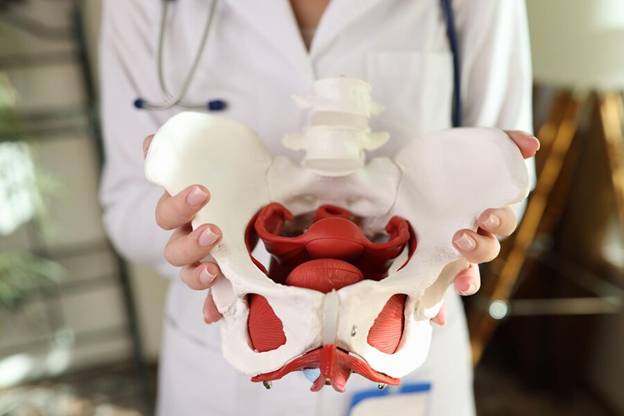Every decision you make can impact your health, including the risk of developing pelvic inflammatory disease (PID). From how you manage stress to your sexual practices, each choice plays a crucial role. Understanding these factors can empower you to make healthier decisions that safeguard your reproductive health.
Introduction to Pelvic Inflammatory Disease
Pelvic inflammatory disease is an infection of female reproductive organs. It’s a serious condition that can lead to complications if untreated. Pelvic inflammatory disease symptoms often include pelvic pain and fever, but some may experience none. Making wise choices daily can significantly reduce the risk. Pelvic inflammatory disease prevention starts with lifestyle adjustments. This is why understanding the impact of your habits is crucial.
Understanding Lifestyle Factors Impacting PID
Many lifestyle factors influence PID risk. Common aspects include sexual practices, hygiene, and overall wellness. Every decision you make contributes to reproductive health. By being informed, you can minimize risks. Knowledge empowers. It enables you to take charge of your well-being and make decisions that protect you from pelvic inflammatory disease.
Safe Sexual Practices: The Bedrock of PID Prevention
Practicing safe sex is vital for pelvic inflammatory disease prevention. Multiple partners increase infection risks, especially without protection. Unprotected sex raises STI transmission chances, directly linking to PID. Understanding pelvic inflammatory disease symptoms helps in early detection. Using condoms not only protects against STIs but also lessens PID risk. Educate yourself and your partners about the importance of protection. Long-term effects of pelvic inflammatory disease can be severe, impacting fertility and quality of life. Always use barrier methods. Prioritize open conversations about safe sex. This creates trust and reduces risks. Knowing the connection between STIs, like chlamydia, and PID stresses the need for vigilance.
Contraceptive Choices and their Link to PID
Choosing birth control directly affects PID risk. IUDs, though effective, can increase infection risks shortly after placement. Barrier methods, like condoms, offer both birth control and protection from PID. Educate yourself on the pros and cons of your options. Understanding these factors minimizes the need for pelvic inflammatory disease treatment by reducing exposure to infections.
The Role of Hygiene in Reducing PID Risk
Proper genital hygiene is vital. Douching is unnecessary and can increase PID risk by disrupting natural bacteria. Stick to gentle cleaning methods. Avoid scented products. Focus on regular, basic washing with water and mild soap. This reduces infection risks. Proper hygiene habits are simple steps towards pelvic inflammatory disease prevention.
Boosting Immunity through Healthier Choices
Maintaining good health aids in avoiding infections. Eating balanced meals strengthens your immune system. Load up on fruits, vegetables, lean proteins, and whole grains. Adequate exercise supports overall health, lowering PID risks. Regular activity boosts circulation and helps the body fend off infections. Preventing illness through diet and movement means less need for pelvic inflammatory disease treatment.
The Effect of Stress and Sleep on Infection Risk
Stress affects your whole body, including your reproductive health. It weakens the immune system. This makes you more prone to infections. Good rest is crucial. Sleep strengthens your defenses. Manage stress through relaxation techniques like deep breathing or yoga. Practicing these regularly bolsters your defense against pelvic inflammatory disease.
Keeping Regular Health Check-ups in Focus
Regular check-ups are essential. Routine gynecological exams detect issues early. Early detection prevents small problems from becoming significant. Addressing concerns early helps avoid pelvic inflammatory disease treatment. Regular medical visits ensure infections don’t become major issues. Staying on top of healthcare is a proactive way to handle reproductive health.
Post-Pregnancy and Post-Abortion PID Risks
Post-pregnancy and post-abortion periods require special care. Timely follow-ups detect and treat any arising issues. Pregnancy changes how the body responds to infections. Awareness of these changes is essential. Proper care during these times reduces pelvic inflammatory disease symptoms and long-term complications.
Empowering Knowledge: Recognizing Symptoms and Preventive Measures
Education is a powerful tool in PID prevention. Learn to recognize pelvic inflammatory disease symptoms. Early signs include unusual discharge, pain during intercourse, fever, and abdominal pain. Don’t ignore these signals. Prompt action minimizes risk and potential long term effects of pelvic inflammatory disease. Always seek medical advice without delay.
Conclusion: Embracing Healthier Lifestyle Choices
Lifestyle plays a significant role in pelvic inflammatory disease prevention. Each decision, from diet to sexual health, impacts your risk. It’s critical to be proactive in maintaining reproductive health. Adopt informed choices that can prevent the requirement for pelvic inflammatory disease treatment. By placing your health at the forefront, you champion its protection and are prepared to deal with challenges if they arise.

